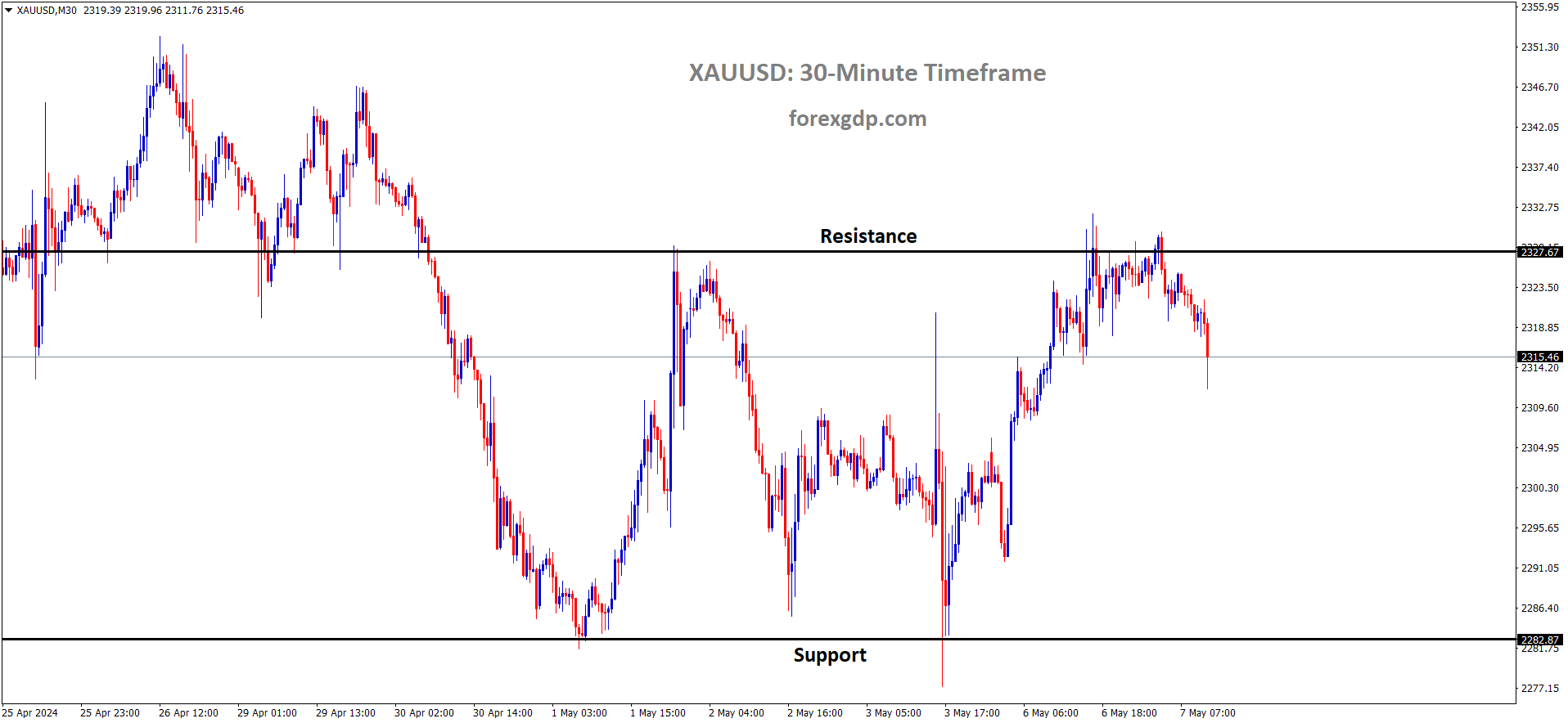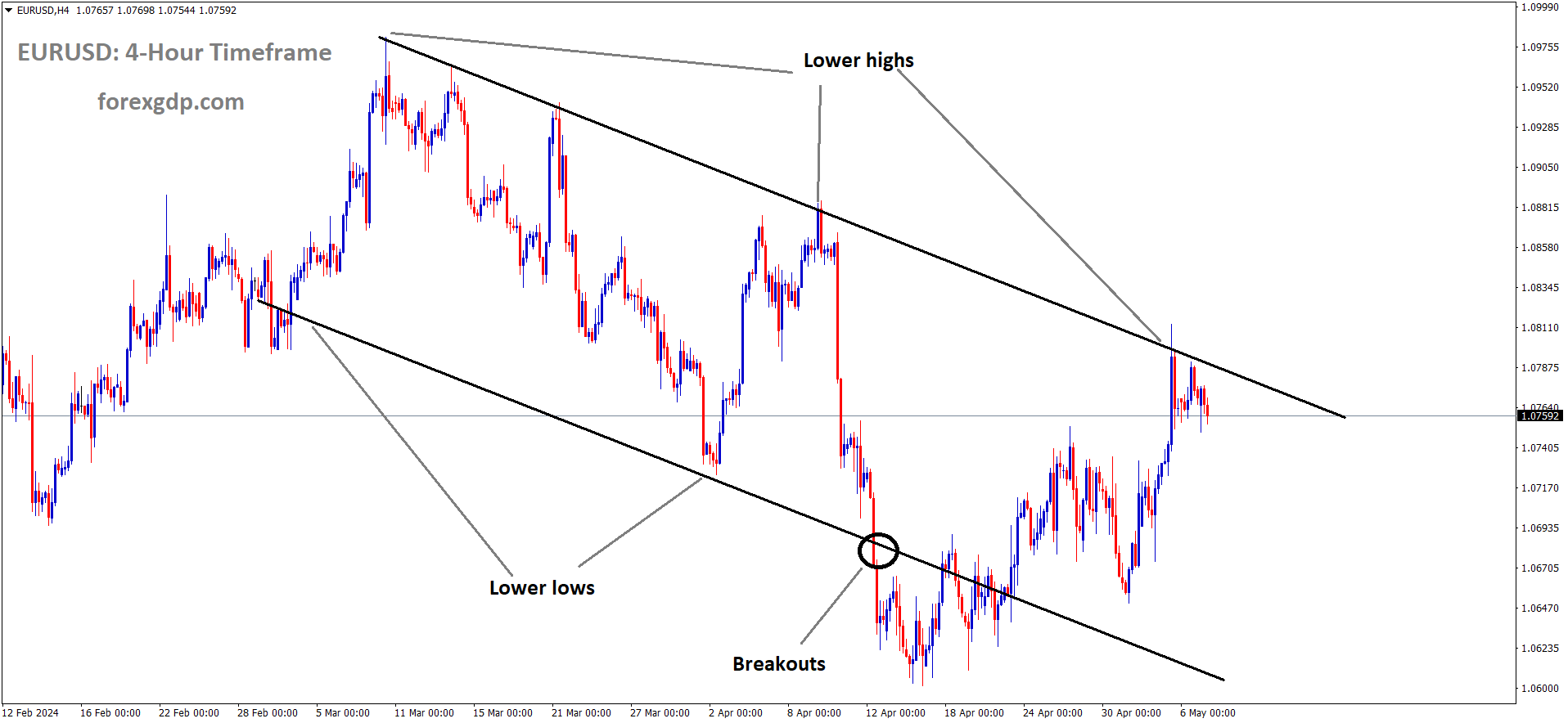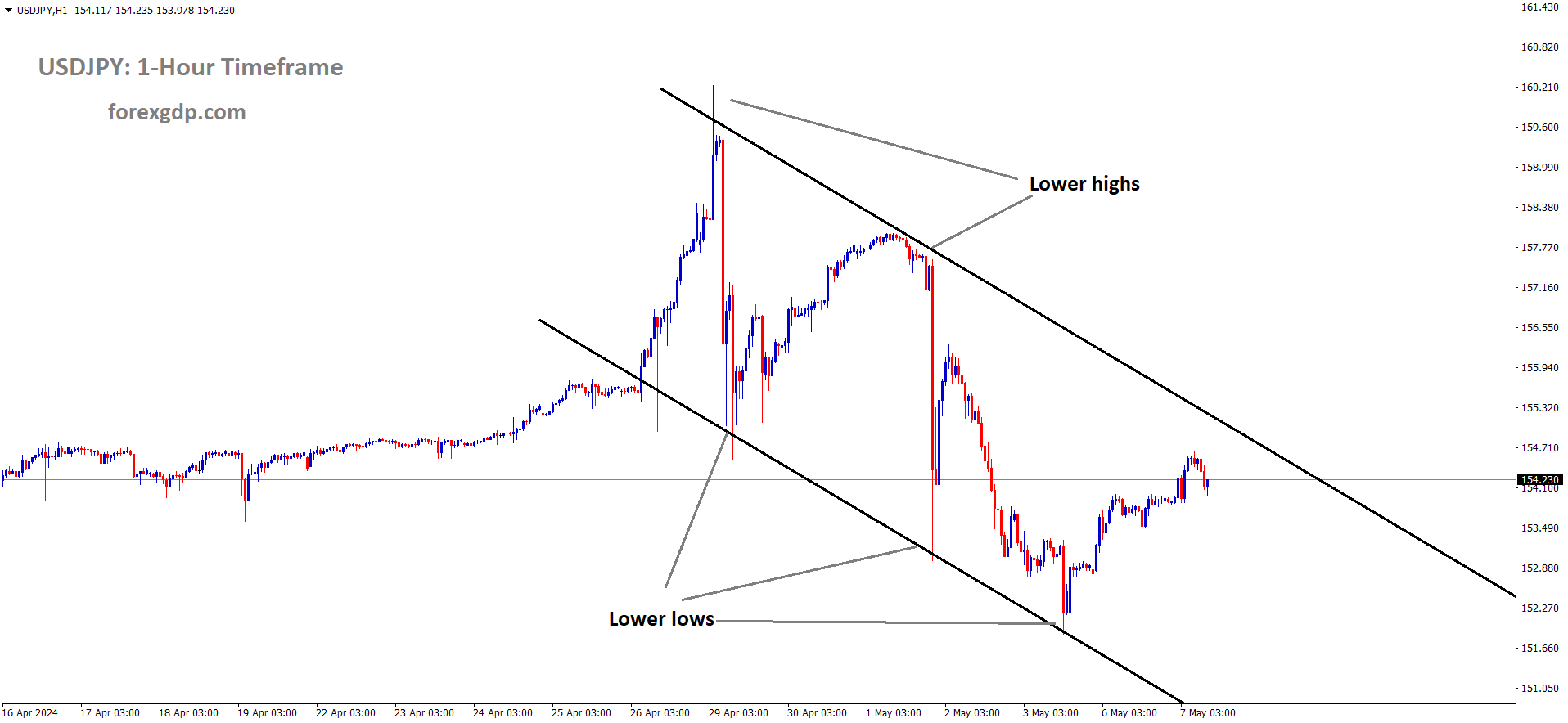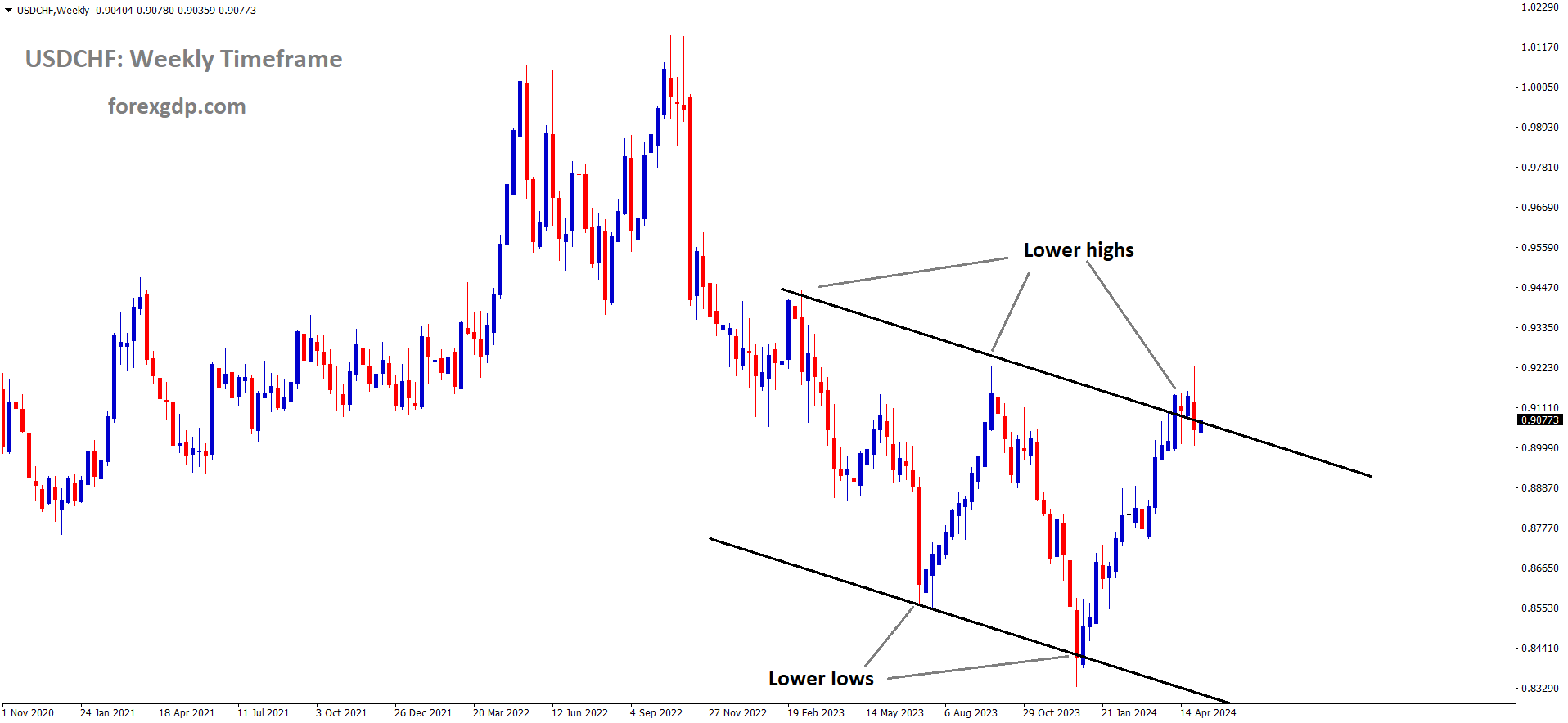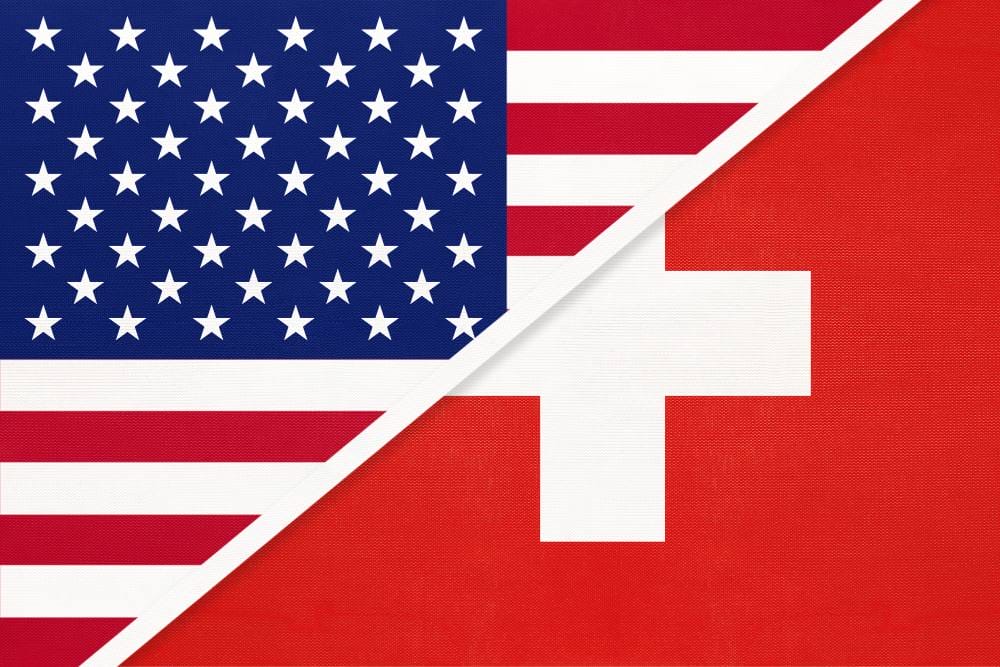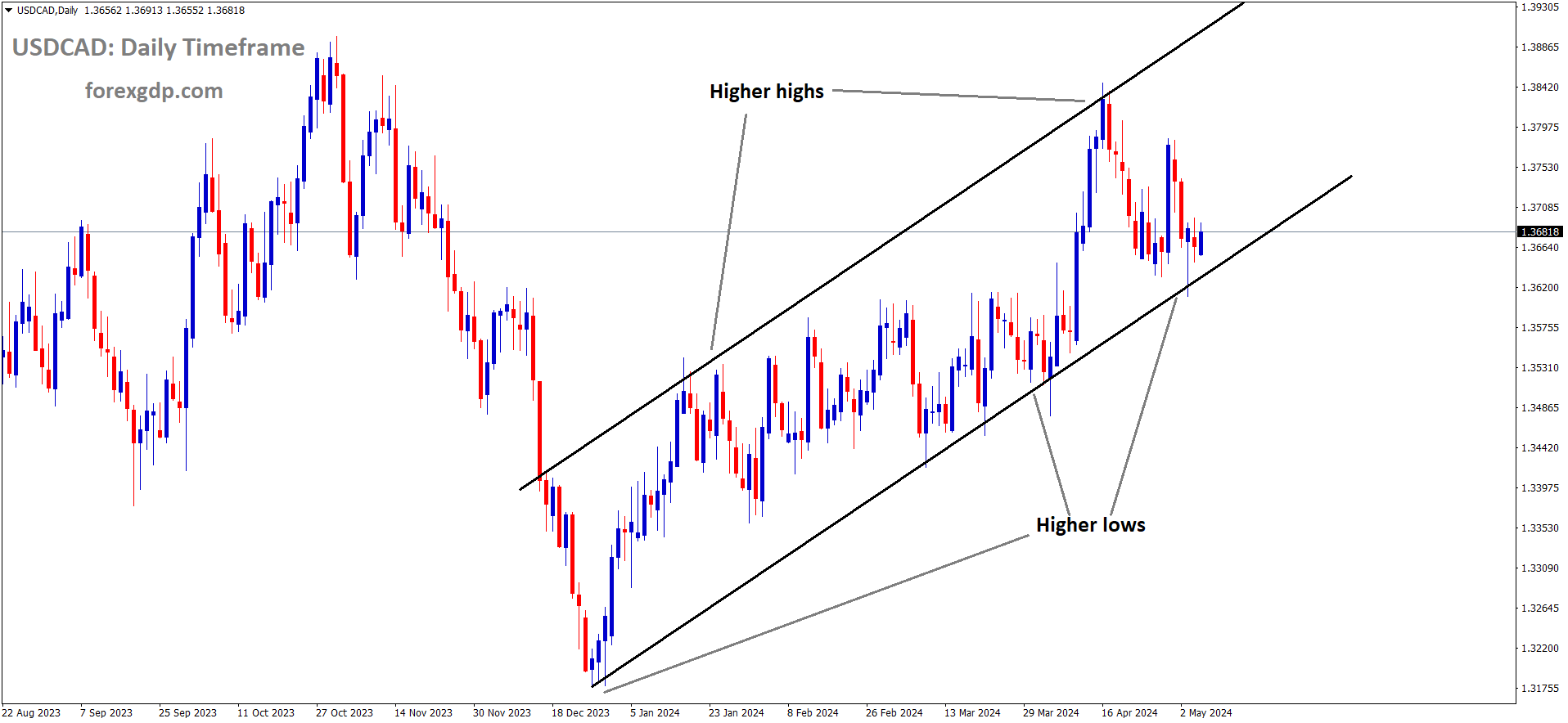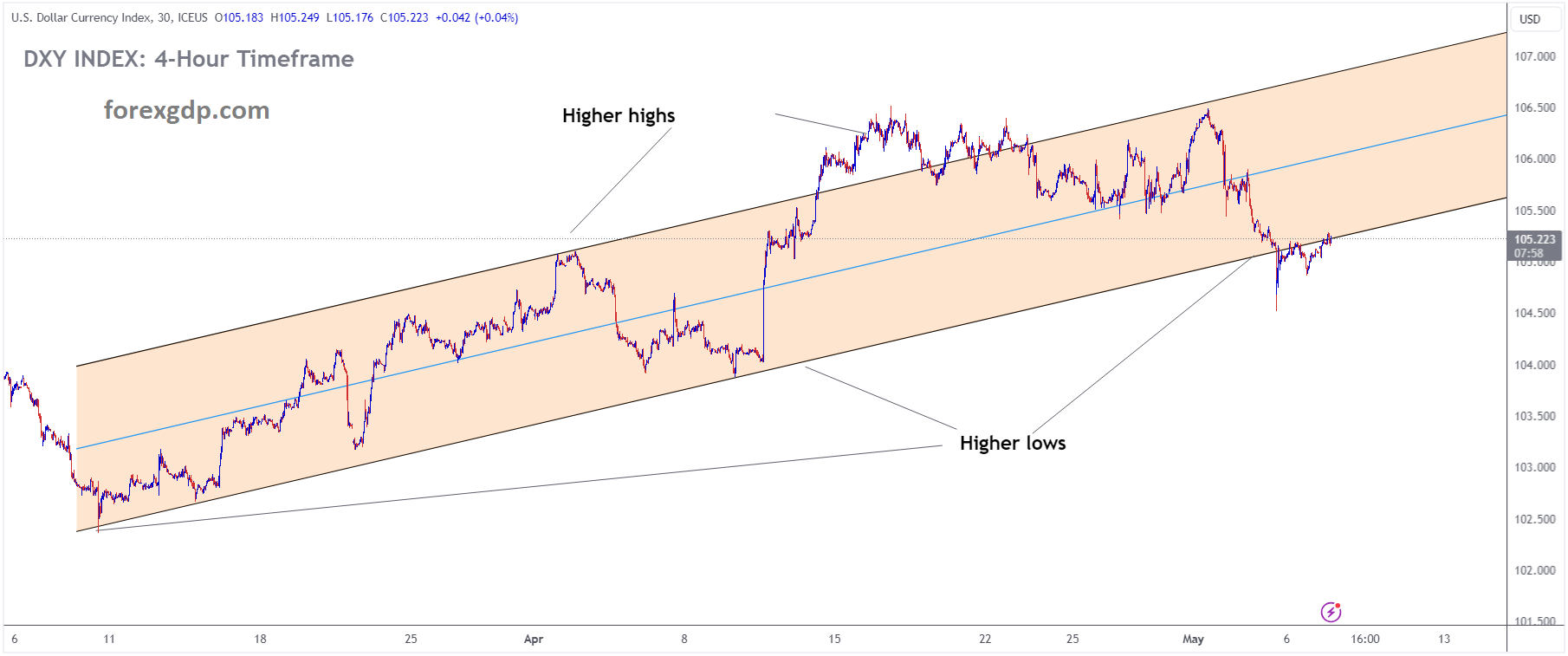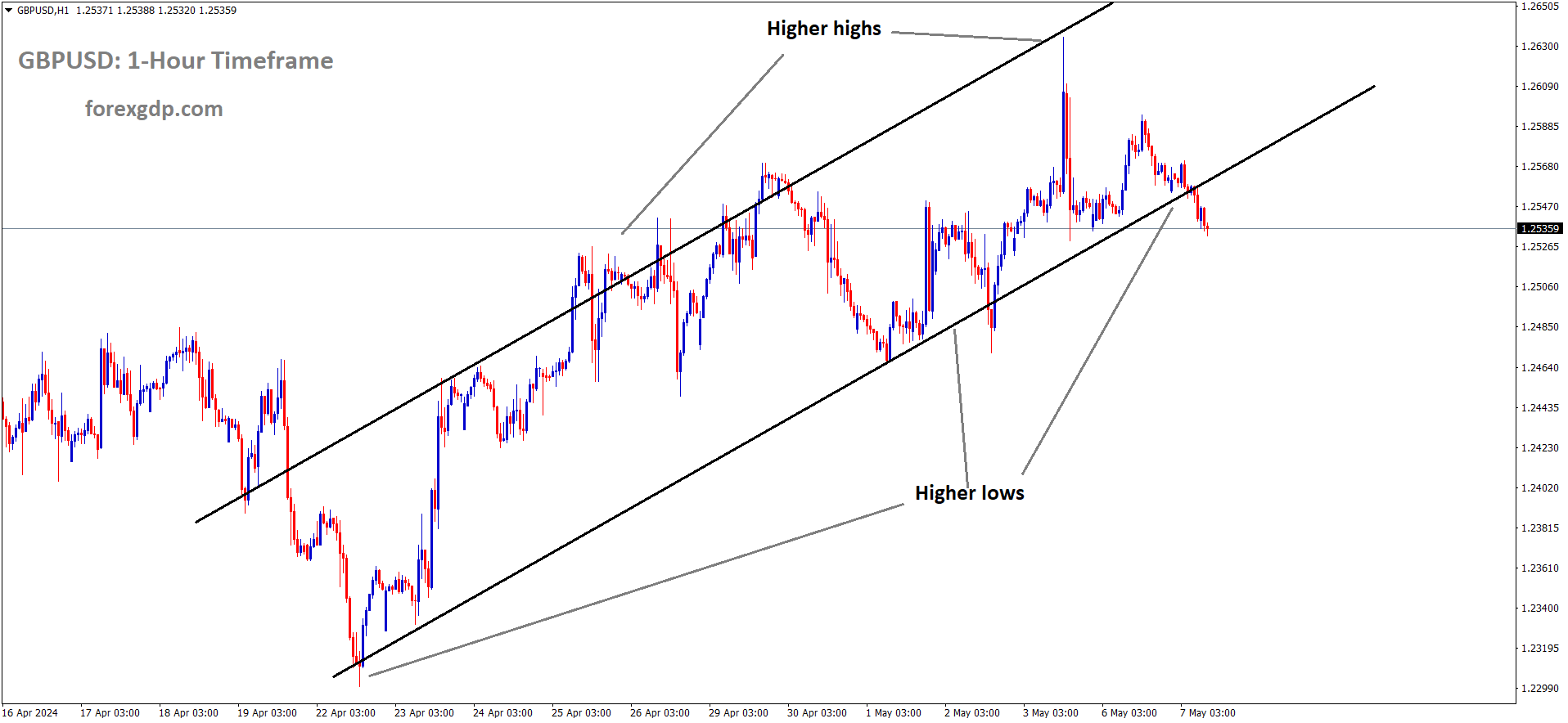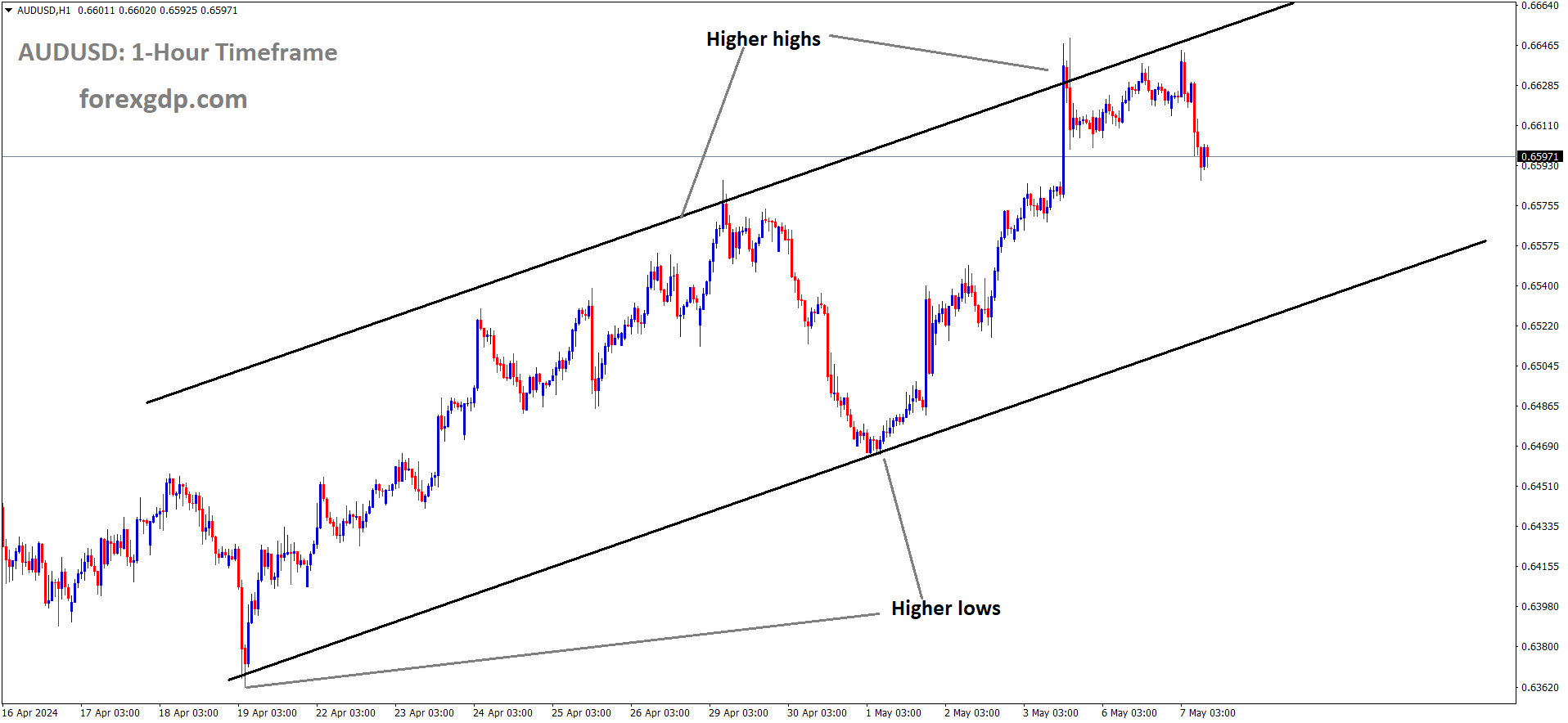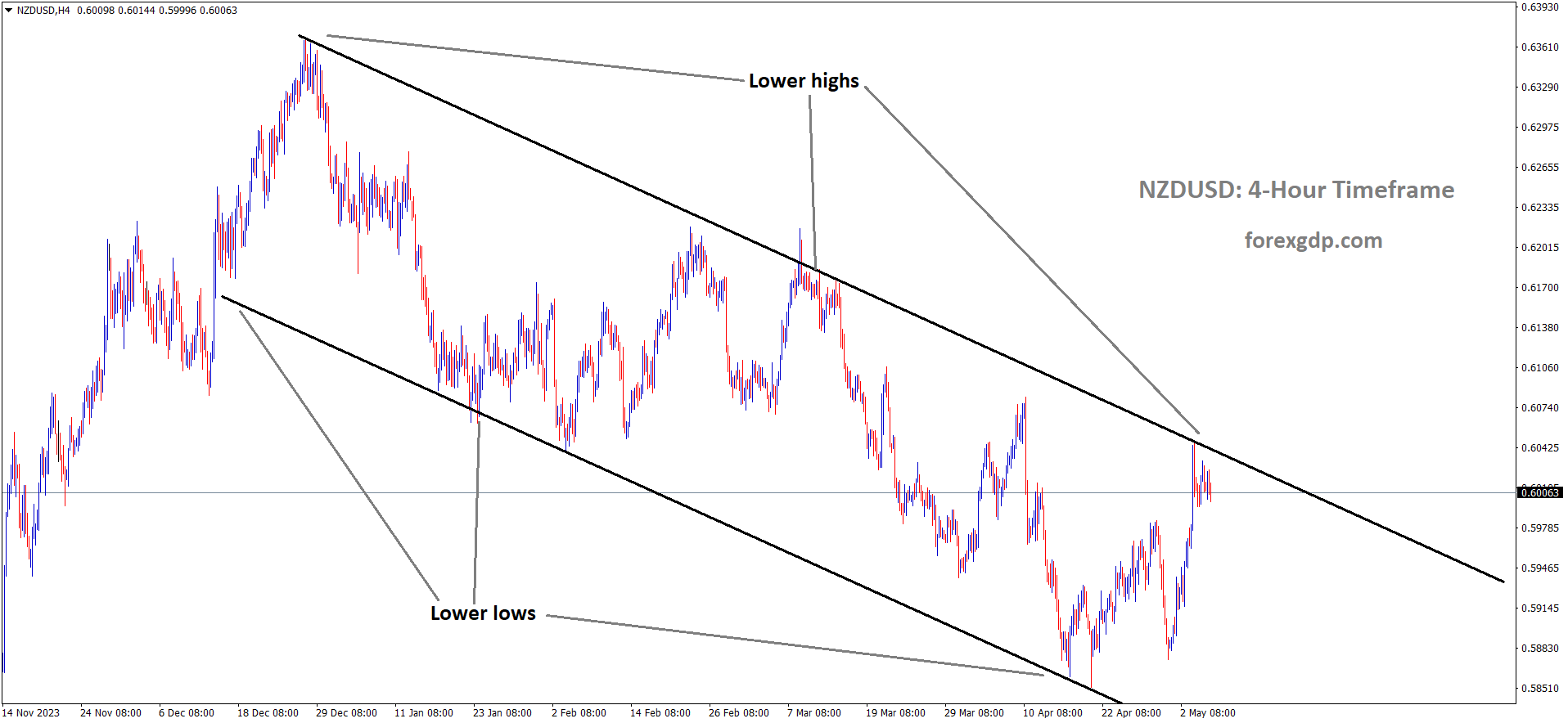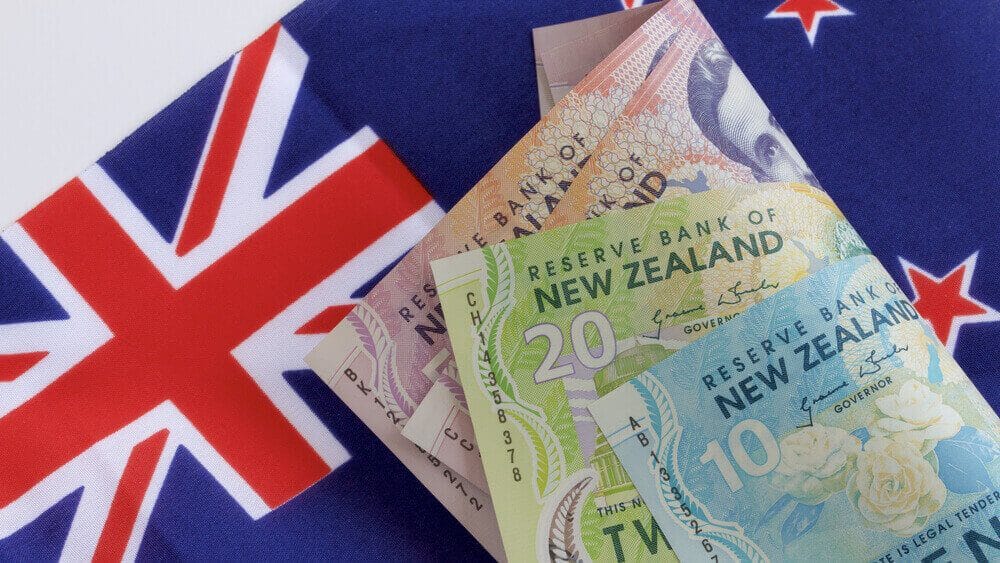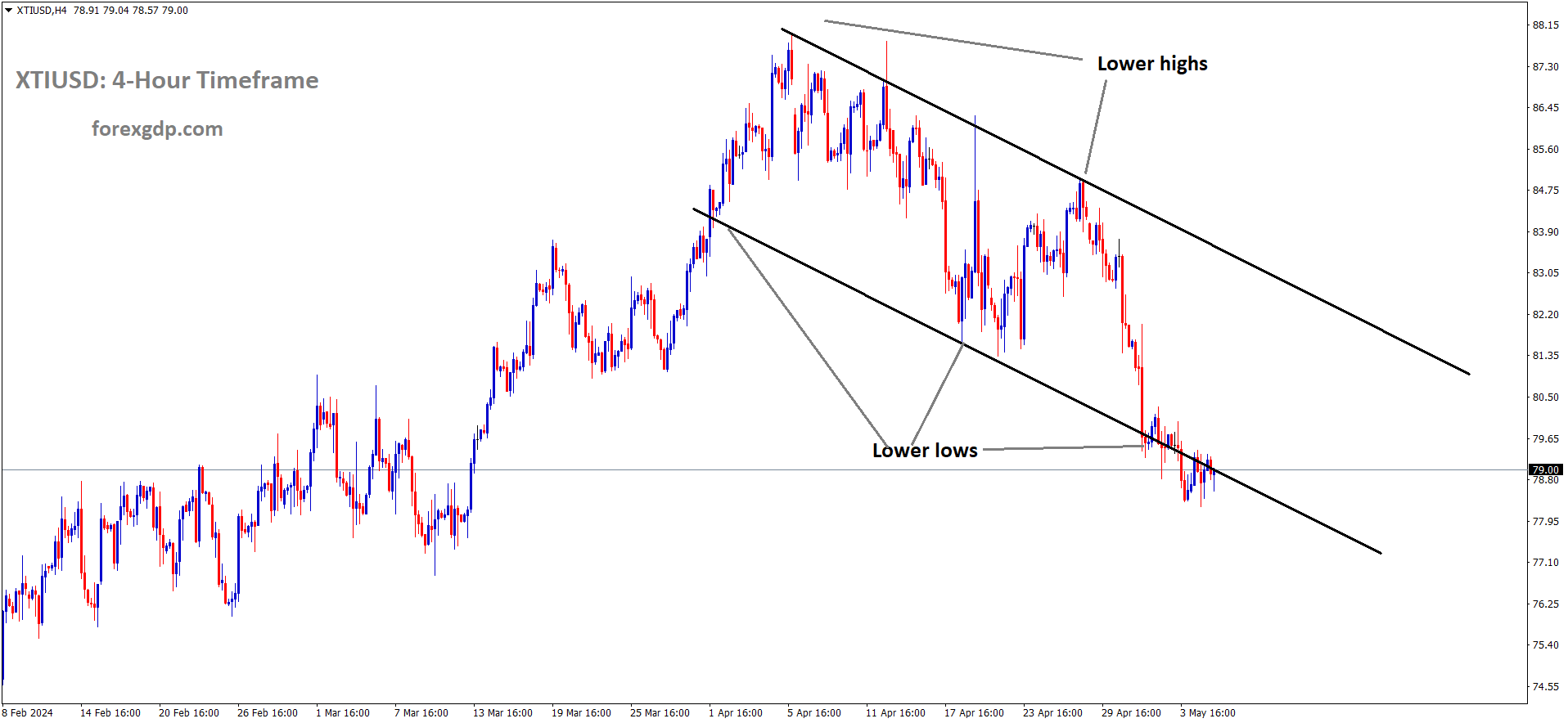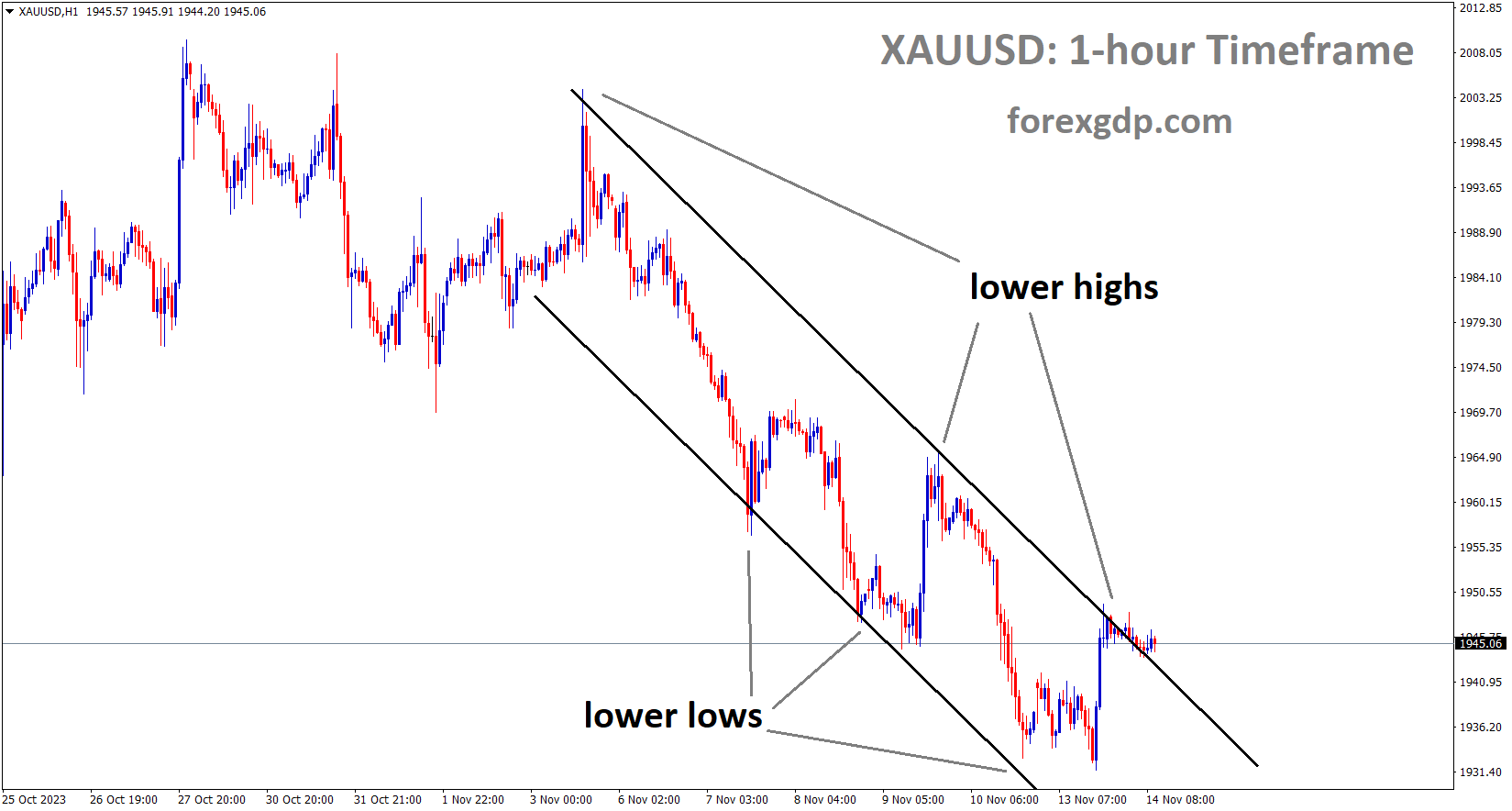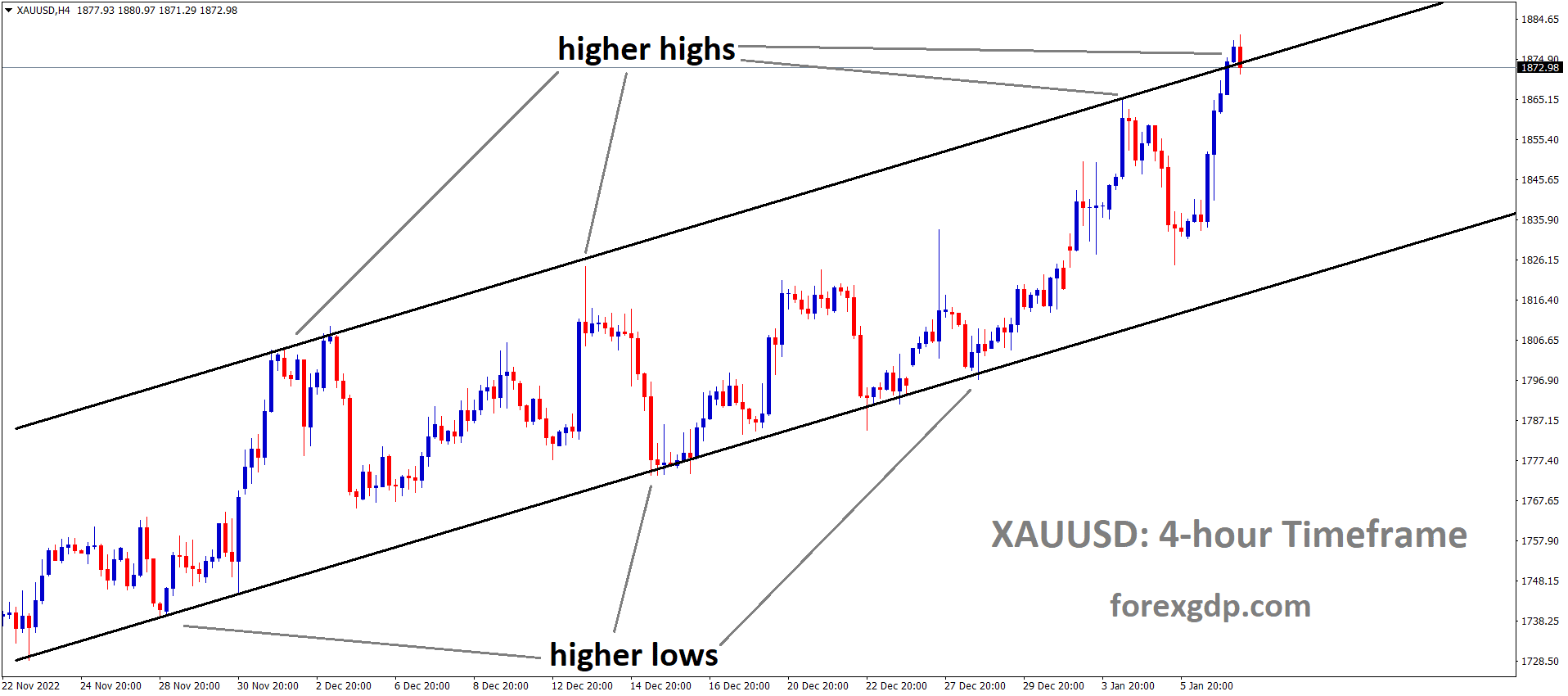XAUUSD Gold price is moving in the Box pattern and the market has fallen from the resistance area of the pattern
XAUUSD – Gold Price Loses Recovery Momentum Amid Renewed USD Demand
The Israel denied deal of Hamas makes another fear in the market. Gold prices again rises in the market against US Dollar. US FED Member reiterated hawkish tone on rate hikes and no rate cuts in this year due to employment and inflation not come to 2% target.
On Tuesday, the price of gold (XAU/USD) lost momentum, largely due to renewed demand for the US Dollar (USD). Despite this, recent US Nonfarm Payrolls (NFP) data suggests that the Federal Reserve (Fed) might cut interest rates later in the year, potentially boosting gold prices. The anticipation of an easing cycle makes gold more affordable for foreign buyers, thus supporting its demand. Additionally, strong central bank purchases and Asian market demand continue to provide underlying support for the precious metal.

However, ongoing political tensions in the Middle East could drive safe-haven flows, benefiting gold prices. Fed Bank of Minneapolis President Neel Kashkari is set to speak later on Tuesday, and any hawkish remarks from Fed officials could strengthen the USD and dampen the appeal of USD-denominated gold.
In other news, Richmond Fed President Thomas Barkin stated that current interest rates should cool the economy and bring down inflation to the 2% target. New York Fed President John Williams indicated that rate cuts are likely in the future, with markets already pricing in a significant cut by the end of 2024.
Meanwhile, Hamas accepted an Egyptian-Qatari cease-fire plan, but Israel rejected it, leading to continued tensions in the region. Despite inflation concerns and uncertainty surrounding Fed rate decisions, gold has seen a 12% increase in value this year.
The latest US employment data showed slower-than-expected job growth in April, with annual wage increases falling below 4% for the first time in nearly three years.
EURUSD – Germany Factory Orders Dip 0.4% in March vs. Expected +0.5%
The Germany Factory orders for the month of March came at -0.40% versus 1.5% increase expected and -0.80% contracted in the February month. Yearly basis -1.9% contracted in the March month. The Euro pairs signed weakness against counter pairs after the reading came.
EURUSD is moving in the Descending channel and the market has fallen from the lower high area of the channel
According to the report from Germany’s Destatis released on Tuesday, factory orders in Germany experienced a decrease of 0.4% on a monthly basis in March, following a previous contraction of 0.8% in February. This latest figure fell short of market expectations, which had anticipated an increase of 0.5%.Comparatively, on a yearly basis, German factory orders showed a decline of 1.9%.
USDJPY – Kanda Silent on Yellen’s FX Intervention Remarks
The Japan Currency Top Diplomat Masato Kanda said Japan Government well knows when to intervention in the market to stop currency depreciation. He said no comments on Yellen speech on FX. FX Markets are moving according to Fundamentals, recent interventions has no comments, end of the month we show you intervention details on FX Market.
USDJPY is moving in the Descending channel and the market has reached the lower high area of the channel
Masato Kanda, Japan’s chief currency diplomat responsible for guiding interventions by the Bank of Japan (BoJ) when deemed essential, asserted on Tuesday that the Japanese government stands ready to address excessive market turbulence. However, Kanda refrained from directly addressing remarks made by Janet Yellen, the United States Treasury Secretary, regarding currency policy.
In his statement, Kanda emphasized the significance of currency stability, highlighting the necessity for exchange rates to reflect underlying economic fundamentals in a consistent and predictable manner. He indicated that if there were to be unwarranted fluctuations in the foreign exchange (FX) market, the Japanese government would intervene accordingly to restore equilibrium.
Despite the topic being the subject of international discourse, Kanda opted not to offer any explicit commentary on specific FX levels. His reserved stance underscores Japan’s cautious approach to engaging in discussions regarding foreign exchange policy matters.
USDCHF – remains above 0.9050 supported by strong US Dollar
The Swiss unemployment rate came at 2.3% in the April month from 2.4% printed in the March month. Unemployed people decreased to 1636 in the April month and Totally now 106957 were unemployed till April month.SNB Chairman Jordan speech on Basel meeting about Digital assets has to transact with Tokenisation method to easy and secure the payments system.
USDCHF is moving in the Descending channel and the market has reached the lower high area of the channel
USD/CHF is holding steady, maintaining its position around 0.9060 in early European trading hours. The pair is supported by a corrective movement in the US Dollar (USD), although the Greenback’s ascent may encounter resistance due to investor optimism following the softer US labor data released on Friday. This has reignited speculation about potential interest rate cuts by the Federal Reserve (Fed) later in 2024.
The US Dollar Index (DXY), which measures the performance of the USD against a basket of six major currencies, is trading higher around 105.20. However, the advancement of the US Dollar is being tempered by weaker US Treasury yields. As of the latest data, the 2-year and 10-year yields on US Treasury bonds are at 4.80% and 4.45%, respectively.
On the Swiss front, the Unemployment Rate (MoM) for April stood at a non-seasonally adjusted 2.3%, slightly down from the previous month’s 2.4%. The number of unemployed individuals decreased by 1,636 compared to the previous month, totaling 106,957. When adjusted for seasonal factors, the jobless rate remained unchanged at 2.3% in April.
In other news, Swiss National Bank (SNB) Chairman Thomas Jordan discussed the exploration of optimal methods for digitally tokenizing financial assets to enhance payment security and efficiency during an event in Basel on Monday. However, Jordan refrained from providing any indications regarding economic or monetary policy.
USDCAD – bounces back over 1.3650 on stronger US Dollar and falling oil prices
The Canadian Dollar moved down after the BoC Governor Tiff Mackhlem comments on rate cuts in this year. The Crudeoil prices are flat after the Israel rejected the Hamas deal. FED and BoC Policy divergence will drag the Canadian Dollar down against USD.
USDCAD is moving in an Ascending channel and the market has reached the higher low area of the channel
The pair is experiencing an upward movement, supported by the strengthening of the US Dollar and the decline in crude oil prices. Investors are awaiting the release of the Canadian Ivey Purchasing Managers Index (PMI) for April, scheduled for later in the day, which could provide further direction for the pair.
Recent US labor market data and comments from Federal Reserve (Fed) officials have fueled speculation of potential rate cuts. Richmond Fed President Thomas Barkin mentioned on Monday that the current interest rate level could help cool the economy and bring down inflation to the Fed’s target of 2%. New York Fed President John Williams also hinted at eventual rate cuts, although he did not specify a timeline.
The US Dollar has gained strength across the board amid geopolitical tensions in the Middle East, leading to increased demand for safe-haven assets like the Greenback. Geopolitical tensions escalated as Israel’s war cabinet voted to continue military action against Hamas, despite Hamas indicating acceptance of a cease-fire proposal by Egyptian and Qatari mediators.
Regarding the Canadian Dollar (CAD), analysts anticipate headwinds in the near term due to potential rate cuts by the Bank of Canada (BoC) compared to the Fed. This expectation may limit the downside potential of USD/CAD. Additionally, the decline in oil prices, reaching two-month lows, is putting downward pressure on the commodity-linked Loonie, given Canada’s significant role as an oil exporter to the United States.
USD INDEX – USD falls at week’s start; NFP data under scrutiny
The US Dollar moved higher after the US NFP Data came at lower than expected last week. Tight labour market and lower unemployment rate makes FED is thinking to delay rate cuts in this year. Inflation is calming down slowly and not fast as expected. The US Dollar moved higher on the Middle east tensions, Israel rejected the Hamas deal on Sunday.
USD INDEX is moving in an Ascending channel and the market has reached the higher low area of the channel
The US Dollar Index (DXY) is currently hovering around the 105 mark, indicating slight losses in Monday’s trading session. These losses come against the backdrop of ongoing concerns about persistently high inflation, a sentiment echoed by Federal Reserve (Fed) Chair Jerome Powell. Despite these concerns, the weak jobs report released last Friday suggests that the US economy may be showing signs of cooling, potentially prompting the Fed to consider rate cuts, which could further weigh on the USD.
The overall economic landscape in the US appears mixed, with strong demand coexisting alongside some weakness in the labor market observed in April. Powell’s cautious approach, acknowledging uncertainties surrounding future inflation trends and the progress of the economy, might lend support to the USD if upcoming data releases indicate continued strength.
In the daily market movements:
– Nonfarm Payrolls in the US rose by 175,000 in April, falling short of the market’s expectation of 243,000.
– The Unemployment Rate edged up slightly to 3.9% from the previous 3.8%.
– Average Hourly Earnings, a gauge of wage inflation, declined to 3.9% year-on-year from 4.1%.
– Market sentiment is tilting towards the anticipation of a rate cut in the upcoming Fed meeting, with June rate cut probabilities holding steady at around 10%.
– Looking further ahead, expectations for rate cuts later in the year have increased, with the odds of a July rate cut rising to 40% from 25%, and nearly 95% for a rate cut in September, up from 55% before the last meeting.
– Bond markets reflect this sentiment, with US Treasury bond yields experiencing declines across the board, including the 2-year yield falling to 4.81%, the 5-year yield slipping to 4.48%, and the 10-year yield marginally lower at 4.49%.
GBPUSD – GBP declines amid attention turning to BoE’s policy verdict
The GBP pair decline in the market ahead of BoE meeting scheduled on this week. The BoE Governor Bailey said 2% target of inflation will be achieved in the April month data. August month is expected rate cuts from BoE, So rate cuts hopes from economists makes GBP weaker tone in the market against USD.
GBPUSD is moving in an Ascending channel and the market has reached the higher low area of the channel
Investor confidence in the US economy remains relatively high, despite recent weak economic indicators such as reduced labor demand, slower wage growth, and a contraction in the Services PMI for April. The overall positive economic performance in the US suggests that the Federal Reserve (Fed) may take a more cautious approach to interest rate cuts compared to other developed economies.
Nevertheless, the disappointing US economic data has fueled speculation that the Fed might consider rate cuts starting from its September meeting. However, uncertainty persists regarding the timing of these potential rate cuts, as policymakers view the current monetary policy stance as appropriate. New York Fed Bank President John Williams remarked on Monday that while rate cuts are likely in the future, current monetary policy remains stable.
: Pound Sterling Faces Pressure Ahead of BoE Meeting
This weakness in the GBP/USD pair reflects investor concerns that the Bank of England (BoE) may initiate rate cuts earlier than the Fed.
Market expectations indicate that the BoE might commence rate reductions as early as August, preceding similar actions by the Fed in September. Despite weaker-than-expected Nonfarm Payrolls (NFP) and Services PMI data for April, the US Dollar continues to benefit from these rate cut speculations.
Investor attention is now focused on the upcoming monetary policy decision by the BoE, scheduled for Thursday. Analysts widely anticipate that the BoE will maintain its current interest rate at 5.25%, marking the sixth consecutive meeting without a change. Therefore, investors will closely scrutinize any commentary from the BoE regarding future interest rate adjustments, which could offer valuable insights into the future trajectory of the Pound Sterling.
BoE Governor Andrew Bailey previously expressed optimism about headline inflation returning to the target rate of 2% in April. Additionally, during the last monetary policy meeting, he indicated his comfort with market expectations of two or three rate cuts throughout the year.
AUDUSD – RBA Governor Bullock Addresses Policy Outlook Post Interest Rate Hold
The RBA Governor Michelle Bullock speech on Rate kept unchanged at 4.35% and addressed, rate hikes are not known, Iam not forecast to see each technical aspects, inflation is slowing down to the target as well. When inflation come to our target we do policy changes in the market. We need employment has to grow but inflation adjusted employment wages has to grow in the market. Dovish Policy makes Australian Dollar moved down against counter pairs.
AUDUSD is moving in an Ascending channel and the market has fallen from the higher high area of the channel
Reserve Bank of Australia (RBA) Governor Michele Bullock is currently addressing the press in a post-meeting conference subsequent to the May monetary policy announcement. This press conference marks a departure from the traditional reporting format for the central bank.
During the May policy meeting, the RBA opted to maintain the policy rate at 4.35% unchanged, marking the fourth consecutive meeting with no adjustment. Despite this decision, the central bank refrained from making any definitive statements regarding its future interest rate actions.
Key highlights from the RBA press conference include:
– Emphasis on the importance of remaining vigilant regarding inflation risks.
– Assertion that current interest rates are deemed appropriate to facilitate the return of inflation to target levels.
– Acknowledgment of the fluctuating nature of economic data, with a commitment to adopting a longer-term perspective.
– Intent to prioritize sustaining employment growth while acknowledging associated risks.
– Commitment to adjust policy as necessitated by evolving economic conditions.
– Government awareness regarding the need for the budget to avoid exacerbating inflationary pressures.
– Disinclination towards immediate tightening of policy rates.
– Caution against attaching excessive significance to technical assumptions in rate forecasts.
– No explicit indication of potential future rate hikes.
– Perception of evenly balanced risks.
– Observation of reasonably balanced market pricing.
– Emphasis on the necessity for continued vigilance.
Governor Bullock reiterated the potential consequences of allowing inflation to surpass target levels, emphasizing the importance of preemptive measures to mitigate such risks.
NZDUSD – nears 0.6000 as US Dollar holds steady
The NZ Dollar moved higher against USD after the US Employment numbers came at lower than expected last Friday. The RBNZ expected to keep the rates at higher in this year due to inflation in the NZ economy continue to stronger pace.
NZDUSD is moving in the Descending channel and the market has reached the lower high area of the channel
The USD’s resilience comes despite disappointing US employment figures released last Friday, reigniting speculations of potential interest rate cuts by the US Federal Reserve (Fed) later this year. Market sentiment remains largely optimistic following Fed Chair Jerome Powell’s relatively dovish tone on monetary policy during last week’s session.
Meanwhile, on the New Zealand Dollar (NZD) front, the China Caixin Services Purchasing Managers’ Index (PMI) for April showed a slight dip to 52.5 from March’s 52.7, aligning with market expectations. Nonetheless, this marks the 16th consecutive month of expansion in China’s services sector, which bodes well for New Zealand’s economy, given its significant trade ties with China.
Looking back, the Reserve Bank of New Zealand (RBNZ) signaled a delay in any potential shift towards monetary easing until 2025, citing unexpected inflationary pressures in the first quarter. This stance is likely to provide ongoing support for the NZD, thereby underpinning the NZD/USD pair’s performance in the near term.
CRUDE OIL – WTI hovers near $78.50 following Israel’s Rafah strike
The Crudeoil prices are moved higher after the Israel attacked Ground invasion of Gaza after the 1 million people in Gaza Evacuated. Hamas has agreed with the deal of Qatari speech, but Israel shows arrogant attack on Gaza by refusing deal with Hamas. This news created another Geo-political tensions in the world market. US have strategic reserves even more painful situations comes from this Israel- Gaza War.
XTIUSD Crude oil Price is moving in the Descending channel and the market has reached the lower low area of the channel
The price saw a slight uptick following Israeli airstrikes on Rafah in Gaza. Negotiations for a ceasefire are ongoing, but no resolution has been reached yet. Israeli forces targeted Rafah, which has provided refuge for over a million displaced Palestinians.
Hamas accepted a ceasefire proposal, but Israel rejected it, citing unmet demands. This ongoing conflict in the Middle East raises concerns about potential disruptions in crude oil supplies from the region, thus supporting oil prices.
According to a Reuters poll on Monday, analysts expect crude oil and product stockpiles in the United States to have declined last week, with crude inventories forecasted to drop by about 1.2 million barrels by May 3.
Amos Hochstein, US President Joe Biden’s energy adviser, stated on Monday that the US has sufficient oil reserves in the Strategic Petroleum Reserve (SPR) to address any supply concerns. The Biden administration had previously initiated the largest-ever sale of 180 million barrels from the SPR after Russia’s invasion of Ukraine in 2022. Despite this, the SPR remains near 40-year lows, and the Biden administration has suspended oil repurchases for the reserve due to crude oil prices trading above the targeted price of $79.00 per barrel.
Don’t trade all the time, trade forex only at the confirmed trade setups
Get more confirmed trade signals at premium or supreme – Click here to get more signals , 2200%, 800% growth in Real Live USD trading account of our users – click here to see , or If you want to get FREE Trial signals, You can Join FREE Signals Now!

